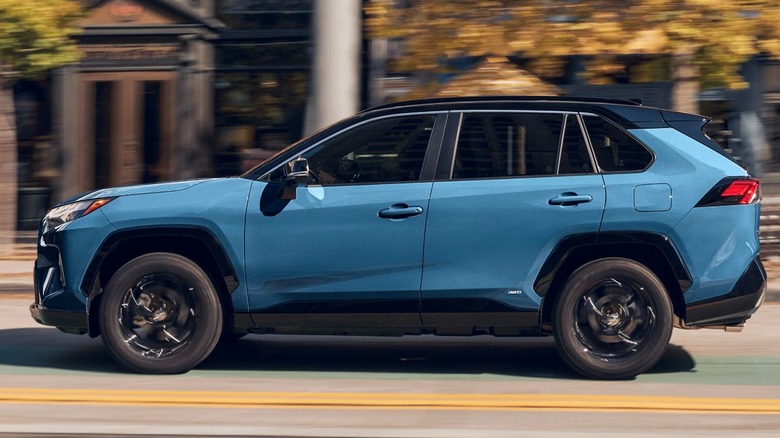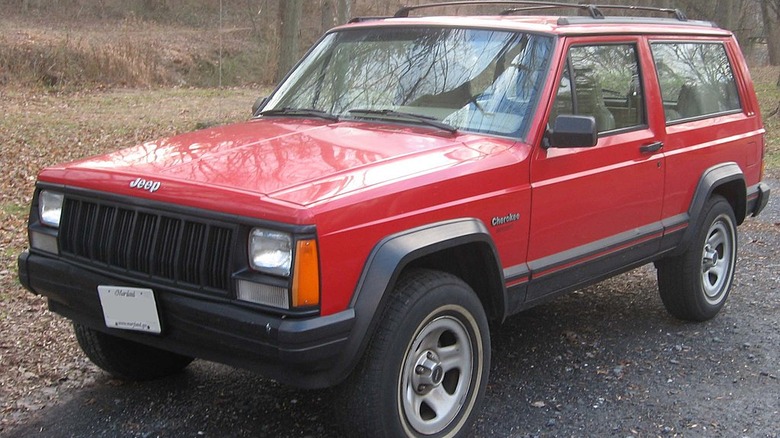What Is A Crossover, And How Is It Different From An SUV?
As of June 2022, crossovers were by far America's favorite light-duty passenger vehicle, grabbing over 45% of U.S. automobile sales according to Statista. The closest rival in sales was pickup trucks, which sold fewer than half the number of crossovers.
What makes crossovers so popular? In a word, versatility — or utility? As the name unimaginatively sums it up, a "crossover" is a cross between a car and a sport utility vehicle (SUV). It offers highlights from both of those vehicle worlds, and often at a lower price point than a traditional SUV. Crossovers such as the hot-selling Toyota RAV4 feature more interior space and ground clearance than a sedan, with better gas mileage and urban maneuverability than an SUV.
For those who have tried shoving an unwieldy child car seat or cooler into a sedan back seat, in preparation for a lengthy road trip with multiple fill-ups, these are the clear advantages of a crossover.
What is a crossover?
Perhaps because "crossover" is too obvious a name. Manufacturers and rental car companies have created a number of other names for this class of automobile, such as crossover utility vehicle (CUV), crossover SUV, sport activity vehicle (SAV), and compact SUV. In the end, these vehicles are defined by having a unibody frame on a car chassis, tracing their lineage to one of the first to use this construction — the 1984 Jeep Cherokee.
A unibody frame provides the urban and highway driving advantages of being lighter for better gas mileage, are typically smaller for easier parking and maneuverability, and have a smoother ride. As a class, they frequently feature front-wheel drive or all-wheel drive (AWD), both of which are a less expensive but perfectly capable alternative to an SUV's 4WD for pavement driving — with or without snow and rain.
Crossovers also tend to have better ground clearance than sedans, but their suspension and tires are not as heavy-duty as those found in trucks, for example. ICE crossovers (as opposed to EVs) tend to have smaller, more fuel-efficient engines such as 4 cylinders (sometimes turbocharged for a boost), but may go up to a V6 drivetrain.
[Featured image by IFCAR via Wikimedia Commons | Cropped and scaled | Public domain]
How is it different from an SUV?
Crossovers and SUVs are frequently spoken of interchangeably, but the differences are immediately obvious when the rubber hits the off-road. SUVs have a body-on-frame design based on trucks, not cars. The truck chassis is more rigid, giving it more strength to handle any twisting or bending that comes from crawling over boulders or towing boats and other heavy loads. SUVs typically deliver higher horsepower for these activities, too; whether from a V6 or V8 engine, along with higher ground clearance to get you to hard-to-reach places.
Some of the SUV's added weight over the crossover class comes from the beefed-up suspension and wheels built for off-road capability, not to mention the extra heft from 4WD systems. Together, these make the vehicles heavier and noisier, and less suited to in-town or even highway driving. For consumers trying to decide whether to buy a crossover or an SUV, the best factor to base that decision on is where they plan to drive it the most.


